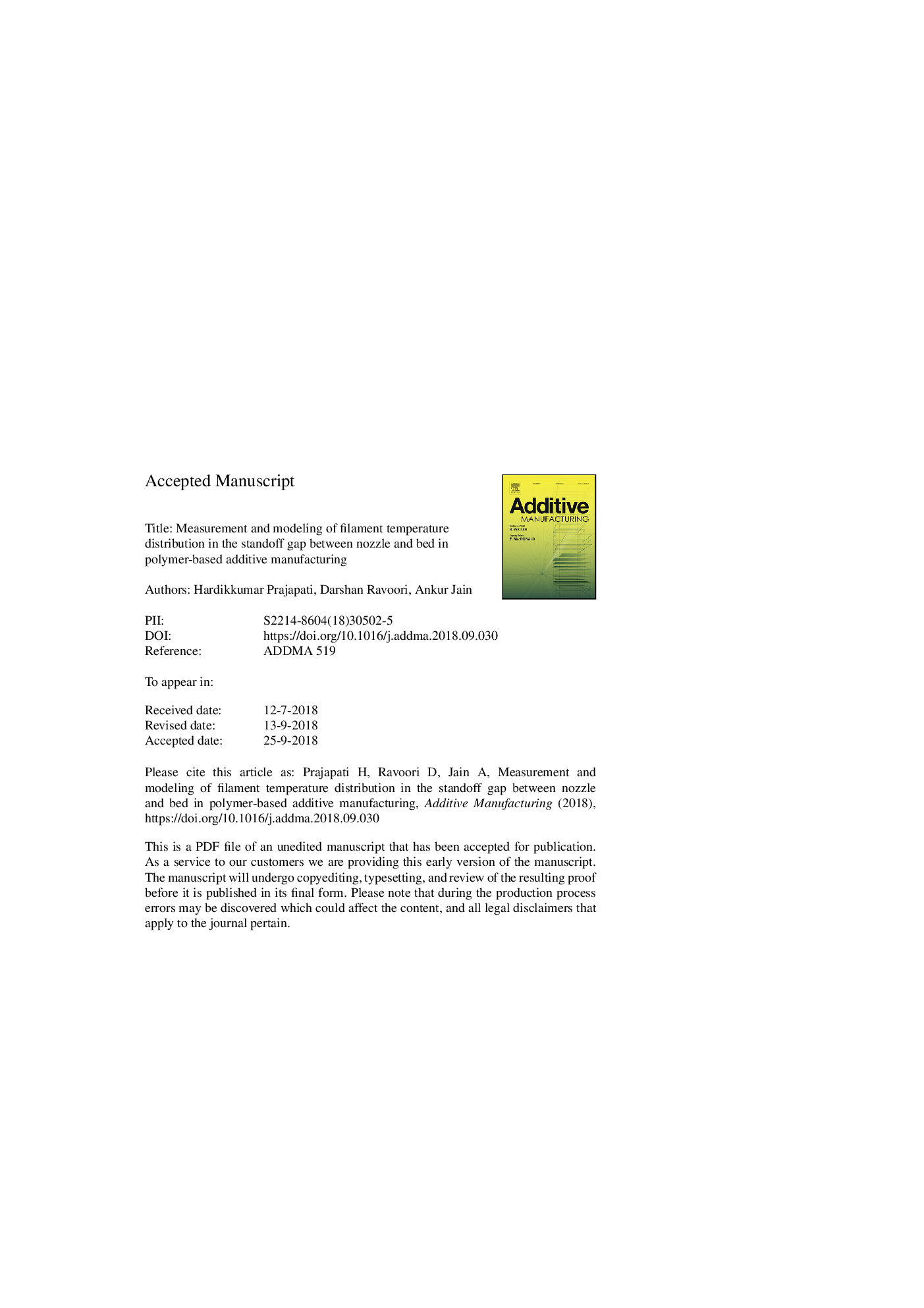| Article ID | Journal | Published Year | Pages | File Type |
|---|---|---|---|---|
| 11027748 | Additive Manufacturing | 2018 | 37 Pages |
Abstract
Dispensing of a polymer filament above its glass transition temperature is a critical step in several polymer-based additive manufacturing techniques. While the nozzle assembly heats up the filament prior to dispense, it is important to minimize cooling down of the filament in the standoff distance between the nozzle tip and bed. While heat transfer processes within the nozzle assembly, such as filament melting, and on the bed, such as thermally-driven filament-to-filament adhesion, have been well studied, there is a lack of work on heat transfer in the filament in the standoff region. This paper presents infrared thermography based measurement of temperature distribution in the filament in the standoff region, and an analytical model for heat transfer in this region. The analytical model, based on a balance between thermal advection and convective/radiative heat loss predicts an exponentially decaying temperature distribution, the nature of which is governed by the characteristic length, a parameter that combines multiple process parameters such as mass flowrate, filament diameter, heat capacity and cooling conditions. Experimental data in a wide range of process parameters are found to be in very good agreement with the analytical model. The thermal design space for ensuring minimal temperature drop in the standoff region is explored based on the analytical model. Experimental data and theoretical modeling presented here improve our fundamental understanding of heat transfer in polymer additive manufacturing, and may contribute towards design tools for thermal optimization of these processes.
Related Topics
Physical Sciences and Engineering
Engineering
Industrial and Manufacturing Engineering
Authors
Hardikkumar Prajapati, Darshan Ravoori, Ankur Jain,
